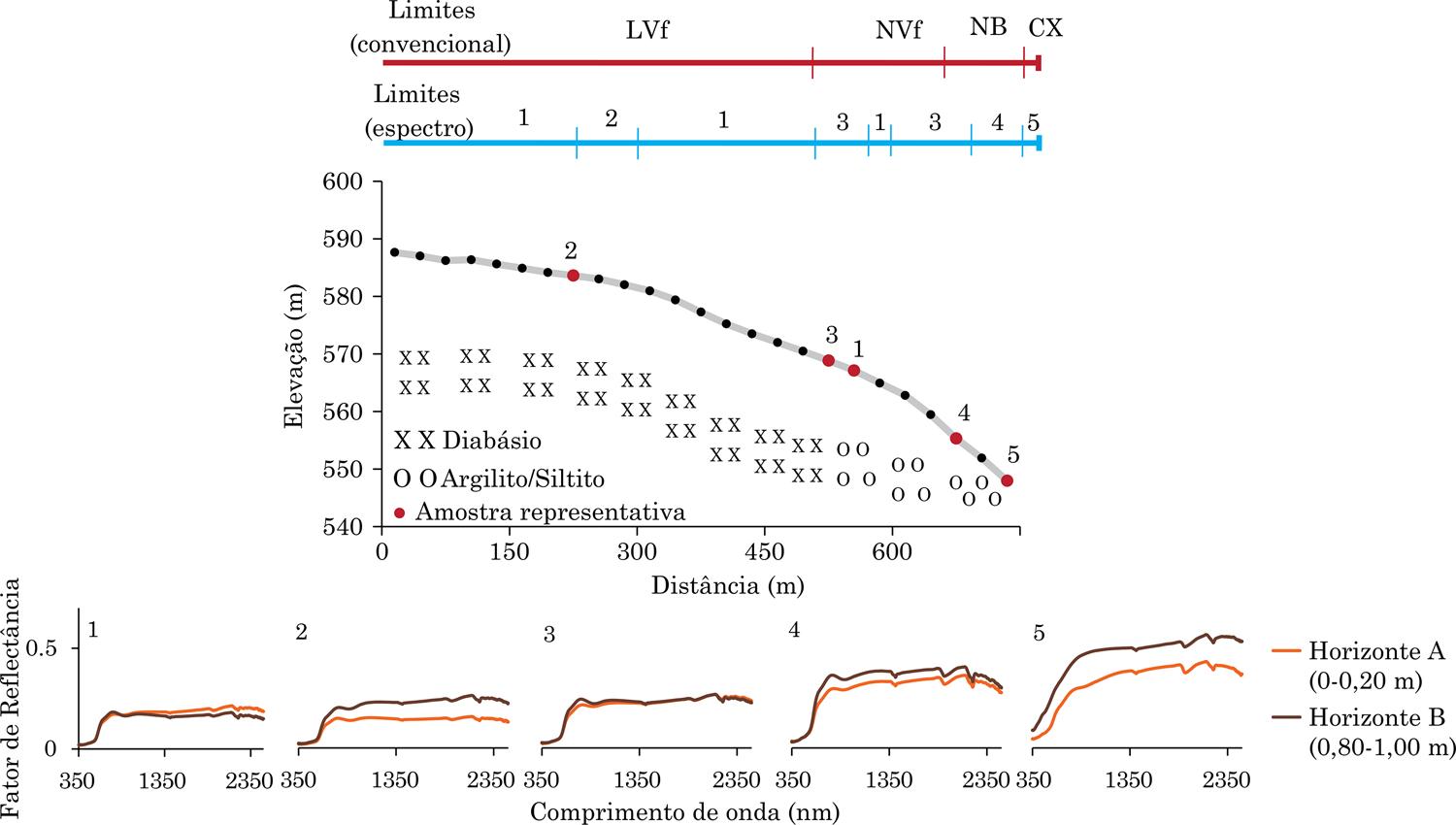ABSTRACT
Knowledge of soils is increasingly important for their correct use in agriculture, in urban growth, and in conservation of natural resources, among other purposes. However, there is a lack of qualified professionals for pedological characterization and mapping, particularly at scales of greater detail. Due to this shortage and due to advances in computational tools and remote sensing, Digital Soil Mapping (DSM) arose in order to assist and expedite pedological survey activities. Thus, the aim of this study was to develop a method for delineation of soil units in toposequences through the spectral response of soils in the Vis-NIR (Visible-Near Infrared) wavelength. The spectral method consisted of obtaining soil spectral curves by means of a spectroradiometer, FieldSpec Pro, and reduction in the amount of spectral information by Principal Component Analysis, followed by clustering of samples by the fuzzy k-means method. Five toposequences with 30 m equidistant points were selected for soil class characterization and sampling. Eight distinct soil classes were identified and received detailed characterization and classification in pedological profiles. For the remaining points, the characterization of soil classes was based on the soil classification contained in the pedological profiles, with samples collected using a soil auger at depths of 0.00-0.20 and 0.80-1.00 m, for a total of 162 samples across the five toposequences. The samples were analyzed by the conventional and spectral method so that the results could be compared and evaluated. Thus, morphological, physical (texture), and chemical analyses of soil samples were made. In the five toposequences studied, the results were similar, and some soils were not perfectly individualized by spectral method, due to great similarity in their spectral curves, as demonstrated by Latossolo Vermelho Férrico and Nitossolo Vermelho Férrico. The spectral method was able to differentiate soils with distinct spectral responses and establish limits in toposequences, showing great potential for implementation in soil surveys.
remote sensing; soil spectroscopy; toposequences; spectral behavior








